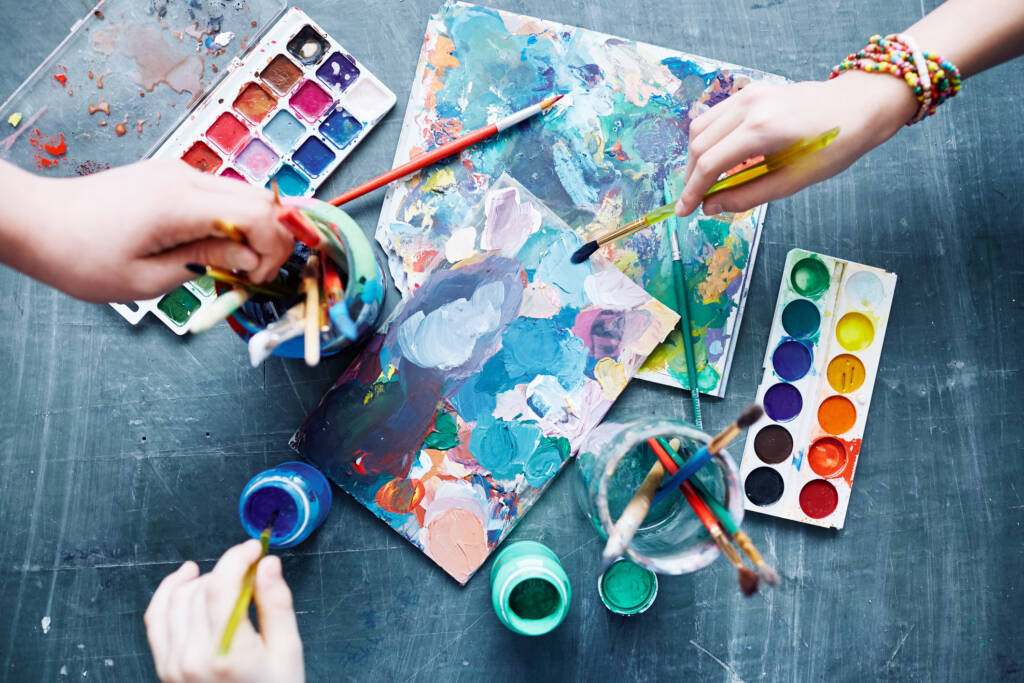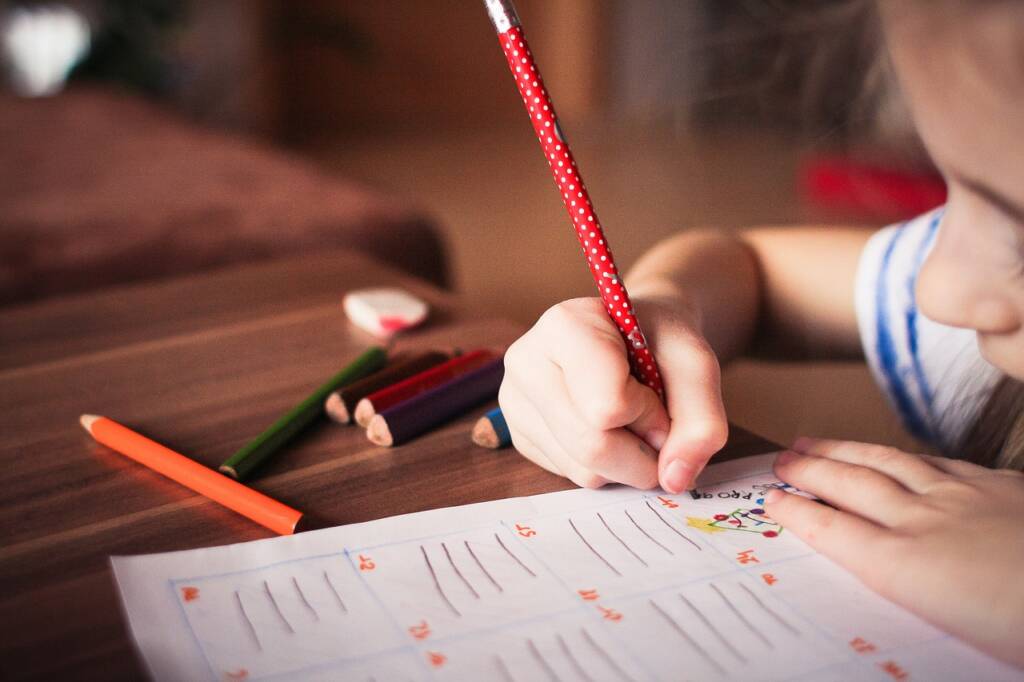
Elementary Art Grade 2

Elementary art at VLACS provides children the opportunity to develop their senses and creativity. The program encourages students to use their imaginations and express their feelings through drawings and colors. The program also includes repetition at different age levels using various tools and mediums. Students explore their world, including home, family, traditions, friends, pets, and toys.
Please view the Elementary Parents Guide for Grades K-2 with guidance on helping your student transition to online learning and thrive at VLACS.
Major Topics and Concepts
- Primary, secondary, and complementary colors
- Wet-on-wet watercolor- wet the paper down completely and paint with watered down paint
- Watercolor control- use less water to keep watercolors in a smaller space without spreading on the paper
- Line positions
- Symmetry (Mirror Image)- one side of the art piece is the same as the other side
- Shapes & Lines in Art
- Shadows
- Printing Block
- Cut out shapes from cardboard and add a handle to the back
- Block Print
- Use it like a stamp to create a print
- Line Types
- Texture
- Movement
Course Materials
To achieve success, students are expected to submit work in each course weekly. Students can learn at their own pace; however, “any pace” still means that students must make progress in the course every week. To measure learning, students complete self-checks, practice lessons, multiple choice questions, projects, discussion-based assessments, and discussions. Students and families are expected to maintain regular contact with teachers because, when teachers, students, and parents work together, students are successful.
Required Materials – Please view the List of Materials before registering.
Competencies
Color
Students will demonstrate an understanding of color by naming the primary and secondary colors, describing how to create secondary colors, explaining complementary colors, and creating a color wheel.
Watercolor
Students will demonstrate an understanding of watercolor by describing the wet-on-wet watercolor technique, explaining how to keep more control over watercolors, and creating a watercolor painting that uses a variety of line positions.
Symmetry
Students will demonstrate an understanding of symmetry by describing symmetry, explaining their use of shapes and lines in their artwork, and creating shadows in a symmetrical flower drawing.
Printmaking
Students will demonstrate an understanding of printmaking by describing the steps for making a printing block, explaining how to create a block print, and creating a block print.
Lines
Students will demonstrate an understanding of lines by describing different types of lines, using lines to create texture, and creating art using a variety of line types.

